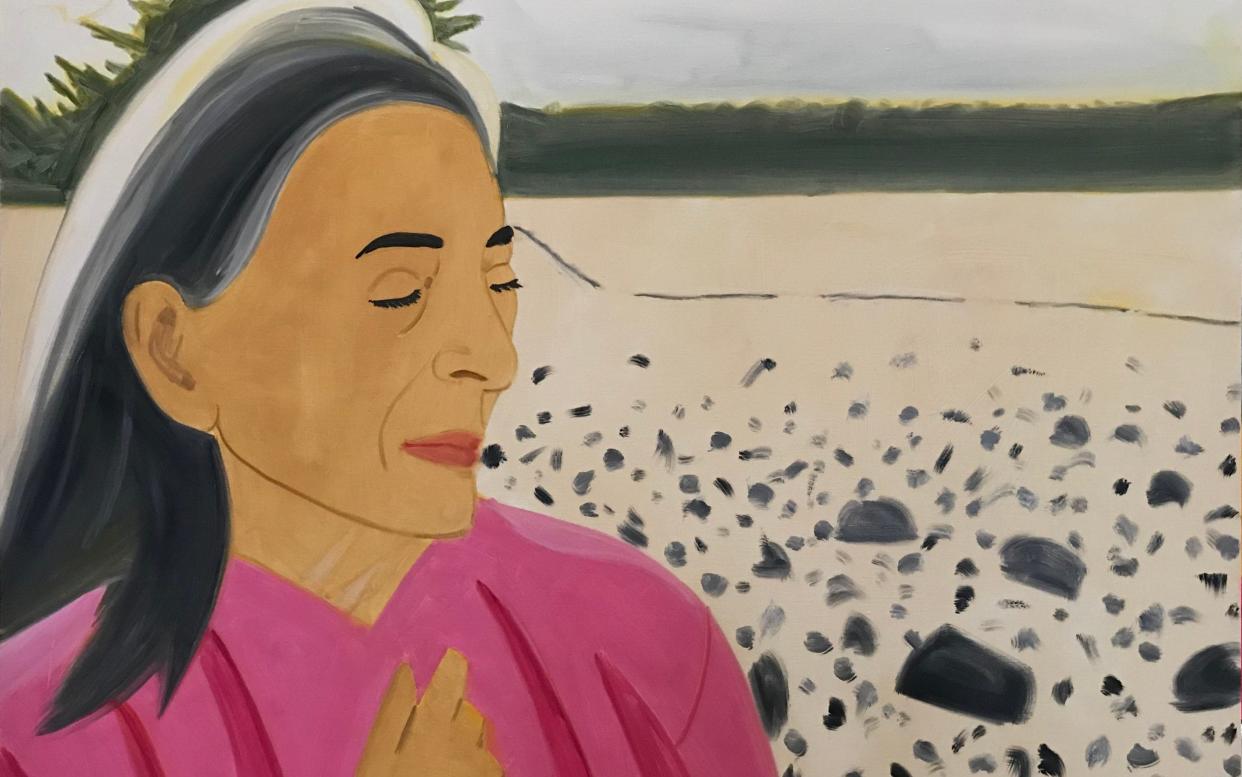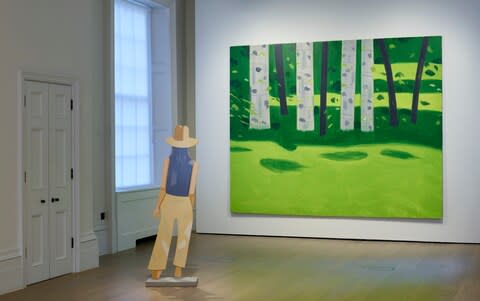Alex Katz, Timothy Taylor Gallery, review: the artist who has painted his wife more than 200 times

The “artist’s muse” is unfashionable now, but she was the making of Alex Katz. As a young artist in 1950s New York, Katz didn’t know how best to paint. He tried collages and landscapes, without much interest or success; he watched de Koonings and Lichtensteins flourish, but wasn’t drawn to their novel styles. Then, in 1957, he met Ada Del Moro, and painted her, and it was as if he’d realised how to see.
Sixty years on, you wouldn’t mistake a Katz for a painting by anyone else. He could trademark his style of portrait: coolly intimate close-ups, cleanly rendered in muted tones. More often than not, his subject is the same. He began with Ada in Black Sweater in 1957, shortly after they met; over 200 portraits later, here she is again in Ada with Pink Sweater 3, in her 92-year-old husband’s show of new work at Timothy Taylor Gallery.
Katz’s longevity has given him hidden influence on the course of painting since the Second World War. He likes to say that he predates Pop art, and he’s cordial at best about Hockney – two common points of comparison. He hung out in the 1960s with Johns and Rauschenberg (and believed he was better than them); without his discipline and treatment of colour, we mightn’t have present-day stars such as Peter Halley or Jonas Wood.
And yet, in all those years, his public profile has never been high. It wasn’t until October last year that Katz broke the £1 million mark at auction, with the sale of Blue Umbrella I (1972). To shake a triumphant fist, Tim Taylor has hung a study for the painting in a corner of the present show. (It’s a portrait of Ada, of course.)
The occlusion of Katz, ironically, owes much to his technique. “No noodling” is what he calls it, but the finish is so smooth that it hides the effort each picture involves. (Painting in the studio is all Katz ever does.) And, as this exhibition reminds you, his style isn’t shocking or brash, but nor does it fit a straightforward box. He’s sometimes called a “realist”, but the russet backdrop to Ada Evening 2 (painted in 2019, like all the paintings in this exhibition) is like nowhere on God’s green earth; nor are the bright greens and yellows of Grass I – one of several landscapes here – what any eyes would see. On the other hand, his people are never “abstract” either; Ada has always been Ada, as recognisable now, in her early 90s, as then.

Here, the landscapes hold the upper gallery, with smaller works in an ante-room. (The large close-up portraits, bar one, are all on the floor below.) This is a brave bit of curation, promoting a genre that has never been Katz’s best and alas, it doesn’t come off. There are lively flickers, for instance, in Four Poplars – light greens scudding to the left, suggestive of windblown leaves; the studied float of darker strokes over the solid grey of the trees – but the composition doesn’t cohere, doesn’t transfigure the flatness into curious depth and life.
Better to stay downstairs with Ada, tightly cropped to the frame. Ada Evening 2 is the stand-out picture, a work of deceptive finish that’s imbued with the feelings of 60 years. Look patiently at what seems simple, and you begin to see it all: the faint angling of her eyes, the way the white streaks in her hair recede, the gentle mismatch of her brows in thickness and shape. Katz’s talent is in painting the emotional part of sight. This is style as bravura performance, but it’s also happy and pure, like a teenage crush.
Until February 22. Info: timothytaylor.com

